John Chrysostom Collection (7 vols.)
Digital Logos Edition
Overview
Known for his eloquent preaching and public speaking, John Chrysostom (c. 347–407), given the posthumous Greek epithet chrysostomos or “golden mouthed,” was the archbishop of Constantinople and an influential Early Church Father. He is recognized as a saint in the Orthodox and Eastern Catholic Church and is one of the Three Holy Hierarchs along with Basil the Great and Gregory Nazianus.
Given to extreme asceticism, he lived as a hermit for two years before poor health forced him to return to Antioch, where he was ordained as a deacon, and later a priest, of the Antiochene Church. His insightful expositions and discourses on the Bible made him a popular orator in the Church, and he was appointed archbishop of Constantinople in 397.
Praised as “the greatest preacher in the early church” John Chrysostom’s homilies and discourses have been a lasting legacy. With the Logos Bible Software edition of John Chrysostom Collection, you have his famous and influential oratories and writings at your fingertips. Scripture passages appear on mouseover, and all cross-references link to the other resources in your digital library, making this collection powerful and easy to access—a rich supplement to any study on the Antiochene Church. Perform comprehensive searches by topic or Scripture reference—finding, for instance, every mention of “Lazarus” or “Antioch.”
- Contains biographies of John Chrysostom
- Includes key discourses and oratories
- Provides criticism and application of Chrysostom’s work
- Title: John Chrysostom Collection (7 vols.)
- Volumes: 7
- Pages: 1,599
This title is included in the following collections
You can save when you purchase this product as part of a collection.
Logos 9 Orthodox Silver Legacy...
$349.99$349.99Verbum 7 Gold Legacy Library
$849.99$849.99Verbum 6 Gold Legacy Library
$849.99$849.99Logos 9 Orthodox Gold Legacy L...
$849.99$849.99
- $1,499.99
- $1,499.99
- $1,499.99
- $2,999.99$2,249.99
- $2,999.99
- $2,999.99
- $2,999.99
- $2,999.99
- $2,999.99
- $2,999.99
- $3,413.99
- $4,749.99$3,562.49
- $4,749.99
- $4,749.99
- $4,749.99
- $12,102.39$7,299.99
- $10,999.99$8,249.99
- $11,399.99
- $11,399.99
- $23,999.99$17,999.99
- $21,749.99
- $24,999.99
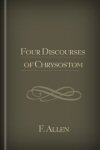
A collection of John Chrysostom’s four oratory discourses on the parables of the rich man and Lazarus. In these rhetorical addresses, delivered in Antioch, John Chrysostom challenges the people of Antioch with a sermon series on Lazarus and how this parable relates to their faith. In the first discourse, he takes on the drunkenness of pagans encouraging the church to deny the flesh and take a stance against inebriation. The second discourse encourages them to consider future judgment and denies the myth that those who die violent deaths become wandering spirits. The third discourse is an address on the state of seeming injustice in the world, where the wicked prosper and the just have troubles. The fourth discourse considers confession and conscience. All four present eloquently formed rhetorical arguments that give insight into the preaching of the early church.

Passing through the marketplace on his way to church one winter day, John Chrysostom saw beggars and the crippled lying in the street neglected. In response, he delivered a homily imploring his congregants to take alms and care of the poor and overlooked people of the city. Translated from the parallel Greek and Latin text of the Abbé Migne.
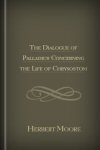
This treatise, attributed to Palladius, the bishop of Aspuna, gives us a full biography of John Chrysostom and includes eyewitness accounts of the orator’s life. It address Chrysostom’s personality and demeanor—highlighting both his moral failures and triumphs. The Life of Chrysostom is written in a dialogue form and has been translated from a Greek manuscript. An introduction by Herbert Moore discusses the authorship, the premise of the book, and presents an overview of Chrysostom’s life.
Herbert Moore (1863–1942) was an English scholar and priest.
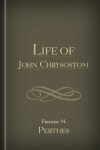
Based on the investigations of Neander, Böhringer, and others, Life of John Chrysostom details the “golden-mouthed” orator’s influence on Asia Minor. It offers a look into his role as preacher and bishop, his interactions with different sects and notable persons during his life, and an exacting account of his three-year exile.

Understanding Chrysostom’s exegetical work is important to understanding the Antiochene church, and Frederic Henry Chase provides a comprehensive examination of the orator’s contributions to the school of Antioch and his interpretations of the Old Testament. In this broad treatise, Chase also takes on the influence of Chrysostom’s critical and scholarly work, as well as his observations on the New Testament Gospels and epistles. His work is a detailed analysis of Chrysostom’s homiletic and oratorical giftings and insights on the ancient church.
Frederic Henry Chase was principal of the clergy training school in Cambridge.
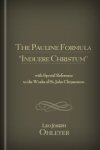
As part of his doctoral dissertation, Leo Joseph Ohleyer examined Paul’s formulaic, yet much disputed, “induere Christum,” a metaphor derived from putting on a garment. He relies heavily on John Chrysostom’s exegesis and interpretation of Romans 13:14 and Galatians 3:27 to supplement and support his point of view, devoting an entire chapter of his dissertation to an examination of Chrysostom’s thoughts and ideas. His work provides a historico-literary investigation of the text, providing arguments for and against Chrysostom’s text.
Leo Joseph Ohleyer (1891–1974) graduated from the Catholic University of America with a doctorate of theology.
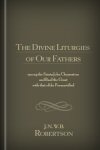
A parallel Greek and English text that contains “The Order of the Hesperinos,” “The Order of the Orthros,” “The Arrangement of the Divine and Sacred Liturgy,” “The Divine Liturgy of Our Father among the Saints John Chrysostom,”“The Divine Liturgy of Our Father among the Saints Basil the Great,” the “Explanation of the Divine Liturgy of the Presanctified,” and “The Divine Liturgy of the Presanctified.”
J. N. W. B. Robertson is also the author of The Acts and Decrees of the Synod of Jerusalem, Sometimes Called the Council of Bethlehem, Holden under Dositheus, Patriarch of Jerusalem in 1672.
John Chrysostom (347–407) was the archbishop of Constantinople and an influential early Church Father. He was known for his oratorial skills and was given the epithet chrysostom, or “golden-mouthed,” after his death.
Reviews
11 ratings

Kevin Bratcher
6/12/2018

Larry Proffitt (I
11/13/2013

Deacon Tim Johnson
11/12/2013

Caleb Allen
10/12/2013

Michael Mullen
9/17/2013

RevSarge
8/5/2013

David R. Emmons
8/4/2013

Doug
7/27/2013

Monroe R Miller
7/22/2013

Gary Butner, Th.D.
7/16/2013